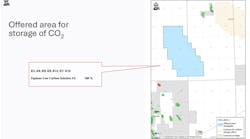Y2K marks new start for systems integration
The petroleum industry passed the test, correcting and securing all of its date-dependent systems prior to 1 January 2000. It was a massive job and the software fixers deserve a healthy handshake and a well-earned fee. Major disasters were averted, regardless of what the nay-sayers and second-guessers postulate.
However, there is still a mess to clean up. The Y2K wave passed but leaves in its wake patched inefficient software. The industry must establish new spending to build fully compliant, tight, and efficient code. One advantage is that companies now know how their software and systems truly operate together (or don't).
This is a once-in-a-lifetime opportunity to transform a massive short-term negative (Y2K repairs) into a significant long-term positive. By using the system knowledge gained, better, more efficient, and effective software can be installed for the next generation of tools. These will be smarter, more effective, and more efficient at every juncture of the exploration and production process.
Solitons - wave of the future
How can we see deeper strata in deepwater plays? The airgun's effective power drops with distance by a factor of four, due to the spherical movement of the wave front. If there was some way to focus the energy, better penetration and deeper investigation with acoustic tools would be possible.
Recent advances at the University of Osaka in Japan may provide a way. Nobumasa Sugimoto created an acoustic soliton - a solitary, long-lasting wave - in air, while seeking a solution to train tunnel shock waves. Interestingly, John Scott Russell observed the first soliton in water on Scotland's Edinburgh-Glasgow Canal in 1834. The principle has seen application in fiber optics and was spotlighted in a recent Science Magazine article. If solitons can be created in open water systems using tuned airgun arrays, a focused pulse of directed acoustic energy could provide the penetration power needed for the future.
Integrating professions an enduring theme
One of the major themes at work in this last year of the 20th century is integration - integration of tools, work proceses, even professional disciplines. The industry is experiencing stepwise integration of different professions on the way to new functionality. The advance of new work forms, is fostering a growing demand for ways to increase the effectiveness of all members of the multi-disciplinary project team.
Integration is most easily accomplished in the world of thought - its first stepchild is computer software. If writing is crystallized thought, then computer code is crystallized process. The advantage of software is its malleability; it is immediately adjustable when a better process is devised. The software tool kit available to each profession is expanding to overlap other pro fessions and create new ways for concepts to pass freely between them.
We are seeing new forms of vertical integration occur in the upstream environment. Yes, between companies, but also between the professions. They are being driven by cost savings, and by computer efficiencies, into being strictly process facilitators.
This process is a danger to creative thought and new prospect/play generation. The integrative computer tool must serve the creative process as well as the strict production target/investment plan. Each profession has a host of tools that are not yet adapted to this integrative computer model and are not being used effectively. Micropaleontology, geochemistry, seismic attribute analysis, laboratory permeability studies, direct hydrocarbon indicators, basin analysis, geochronology, paleoclimate, paleoecology, and grain/porosity/cement studies are just a few examples. These must be incorporated, not forgotten.
An attitude that equates high image output with high prospect quality guarantees dry holes, because of incomplete investigation. It is the duty of the exploration and development team to demand sufficient time to create the most complete and effective solution to the assigned problem.
Exploration
Australian geochem
A new study by AGSO and CSIRO documents the hydrocarbon charge history of the Eyre Sub-basin in the Great Australian Bight. Samples, gathered from the Jerboa 1 well, contained fluorescing oil inclusions from Jurassic sandstones (Callovian-Kimmeridgian age). Isolation of oil inclusions coupled with molecular composition analysis led researchers to suggest potential source rocks within the sub-basin (contact Graham Logan; Tel: +61-2-6249-9460; Fax: +61-2-6249-9980).
ODP Leg 188
The Ocean Drilling Program (ODP) has begun a new investigative leg in Antarctica. Leg 188 will include drilling at three sites to:
- Sample the Prydz Bay sedimentary basin for clues to the glaciation history
- Attempt to link East Antarctic Ice Sheet events with changes in the Southern Ocean
- Recover cores from Late Miocene and younger ice advances and retreats.
The drill sites chosen will sample three zones: the continental shelf for Paleogene galcial sediments through Cretaceous coal-bearing sediments, the continental rise for turbidite and contourite drift deposits, and the continental slope for a channel fan deposit. This leg should provide information on glacier climate controls.
Hi-powered processing
Woodside Energy named Veritas DGC to undertake the pre-stack time migration of a 1,391 sq mile offshore Mauritania survey. The work will be done in Veritas' new Singapore facility. Full Kirchoff pre-stack time migration will be employed.


